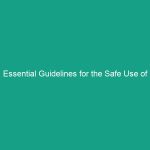Introduction
Good morning team! Today, we’re diving into a vital topic that impacts our daily work Environment: Essential Electrical Safety Audits: Identifying and Correcting Hazards. Understanding electrical Safety and performing regular audits is crucial to ensuring a safe workplace. Electrical Hazards can lead to severe injuries or even fatalities, which is why it’s essential to recognize and address these risks proactively.
Understanding Essential Electrical Safety Audits
So, what exactly are electrical safety audits? These are systematic reviews of electrical systems and equipment to identify potential Hazards and ensure compliance with safety Standards. Conducting these audits is important not just for regulatory compliance but also for protecting our most valuable asset—our employees.
Many people may think these audits are a one-time task or just a box to check off for compliance. However, regular audits help maintain a culture of safety and keep everyone informed about potential risks. Remember, electrical hazards can be hidden, and ignoring them can have dire consequences.
Key Hazards, Risks, and Safety Considerations
Electrical hazards can manifest in various forms, including:
- Overloaded Circuits: This can cause overheating and Fires.
- Exposed Wiring: Open or damaged wires present a significant shock risk.
- Improper Grounding: Lack of proper grounding can lead to electrical shocks.
- Inadequate Protection: Using the wrong protective equipment can increase the risk of injury.
Ignoring these hazards can lead to serious injuries, property damage, and even fatalities. It’s essential to act on these risks immediately.
Best Practices, Procedures, & Actionable Advice
Implementing Best Practices during electrical safety audits is key to identifying and mitigating risks. Here are some steps you can take:
1. Conduct Regular Audits
Schedule audits at regular intervals—at least once a year. This ensures that any changes in the workplace or new equipment are evaluated for safety.
2. Use a Checklist
A comprehensive checklist can help ensure all areas are covered. Key items should include:
- Inspecting all electrical panels and circuits
- Checking for proper grounding and bonding
- Ensuring circuit breakers and fuses are adequate for the load
- Testing residual current devices (RCDs)
3. Training and Awareness
Ensure that all employees receive Training on the electrical systems they work with. This includes how to recognize hazards and what to do in case of an emergency.
4. Document Findings and Actions
Keep detailed records of audits, including findings and corrective actions taken. This documentation is vital for compliance and helps track the effectiveness of Safety Measures.
5. Real-World Example
Consider the case of a manufacturing facility that failed to conduct regular electrical audits. An unnoticed overloaded circuit caused a fire, resulting in significant property damage and injuries. This incident could have been avoided with regular checks and adherence to safety practices.
Regulations, Standards, and Compliance
Compliance with Regulations such as OSHA standards is critical for Workplace Safety. osha outlines specific requirements for electrical systems, including:
- Proper installation and Maintenance of electrical equipment
- Use of safety equipment, like insulated tools and Personal Protective Equipment (PPE)
- Regular employee training on electrical safety Procedures
Understanding these regulations not only helps to protect employees but also minimizes legal risks for the organization.
Employee Engagement & Discussion
Now that we’ve covered the essentials, let’s open the floor for discussion. I’d like to hear from you:
- What safety challenges have you encountered related to electrical hazards?
- Have you ever noticed a potential electrical risk that was overlooked?
Sharing your experiences can help us all learn and improve our safety practices.
Conclusion & Key Takeaways
To wrap up, electrical safety audits are essential for identifying and correcting hazards in our workplace. By regularly assessing our electrical systems, using checklists, and staying compliant with regulations, we can ensure a safer environment for everyone.
Let’s prioritize safety in our daily routines and encourage one another to remain vigilant. Thank you for your attention and commitment to making our workplace a safer place!


